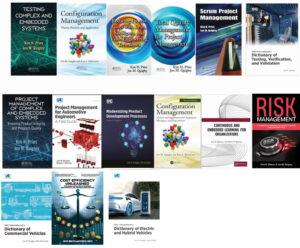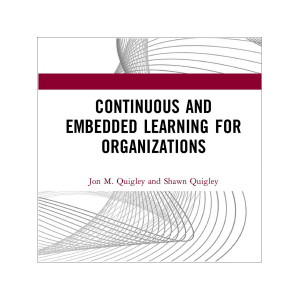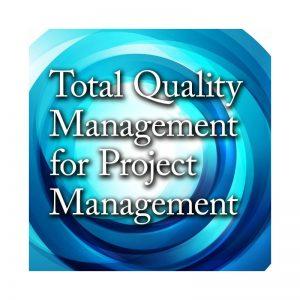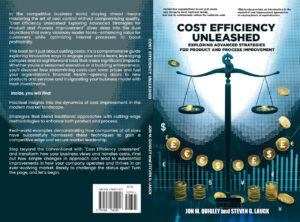Purchasing and Procurement in Project Management
Why Purchasing Matters in Project Management
Purchasing is a cornerstone of successful project management, directly impacting cost, quality, and schedule. Purchasing and supplier selection figure prominently in product development and project management, emphasizing that effective purchasing is not just about buying goods or services—it’s about strategic supplier selection, risk management, and aligning procurement with project objectives.[i] [ii].
For background, this is written from this post on linkedin
Key Principles of Purchasing
Supplier Selection and Qualification
One of the most critical steps in purchasing is supplier selection. In his LinkedIn articles and presentations, from experience, a significant impact on the project is due to delays in supplier selection that derail project schedules and budgets. He advises that supplier qualification should be integrated into project planning, with clear metrics and timelines to avoid costly delays. [iii].
In addition to late supplier selection,
“Selecting the product supplier (for development and manufacturing work) is an important part of the project. Supplier selection activities should be accounted for in terms of time and money. Delays in finding and qualifying the supplier will impact the project schedule.” [iv]
Cost Management and Value Engineering
We have many approaches to optimizing purchasing decisions that drive cost efficiency in his book Reducing Process Costs with Lean, Six Sigma, and Value Engineering Techniques. We advocate for collaboration with suppliers to redesign components, reuse existing products, and leverage value engineering to reduce costs without sacrificing quality. [v] [vi]
Risk Management in Purchasing
Purchasing is inherently risky—supplier failures, market fluctuations, and quality issues can threaten project outcomes. We have presentations, such as “Demystifying Risk Management in Project Management,” that stress the importance of integrating risk assessment into the procurement process. Organizations can safeguard project success by identifying risks early and developing mitigation strategies. [vii].
Best Practices for Purchasing
Align Procurement with Project Goals
We have written many articles on PMtips and its Transformation Corner, emphasizing that procurement must be closely aligned with project goals. This means involving procurement staff early, ensuring they understand system requirements, project objectives, and fostering communication between relevant team members, such as engineering, project managers, and purchasing teams. [viii] [ix]
Embrace Continuous Learning and Improvement
In Continuous and Embedded Learning for Organizations, we argue that organizations should continually refine their purchasing processes. By learning from past projects and sharing knowledge across teams, companies can adapt to changing markets and improve procurement outcomes. [x]
Learning is not limited to past projects; premature design and supplier selection can also be a failure mode for projects. We may have competing project solutions from various suppliers; we should be collecting metrics (learning) from this effort to help select the best solution and supplier for this effort.
Also, from experience, selecting a supplier on cost alone should not be a thing. But sadly, supplier selection is still based primarily on price. I cannot tell you how long we have heard that the best solution is a transparent relationship with the supplier. For example, we have seen a supplier selected for an embedded software/hardware development project with minimal experience. The chosen supplier did not have in-circuit emulators, which at the time were a fundamental tool for developing embedded products, especially sophisticated automotive products.
Optimize Purchasing Decisions with Data
We have frequently discussed the value of metrics in procurement. Tracking supplier performance, cost trends, and quality outcomes enables data-driven purchasing decisions, reducing guesswork and enhancing project predictability. [xi] [xii]
Purchasing in Practice: Real-World Applications
My career includes hands-on experience in supplier negotiations, cost reduction initiatives, and cross-functional project teams. [xiii] [xiv] I have taught classes about the nexus of procurement with project management. My career has been about trying to understand the entirety of the product development space. It is the reason for the MBA, learn what the customer needs, how to get the product to them, and see if there is a business case. Similarly, my MSc Project Management and PMP certification are there because having excellent engineering, creative, and business skills will not lead to a win. We will need to stay within budget and deliver results on time if we want to be successful – that is, project management functions. All of these things are connected.
I have written about collaborating with suppliers to solve product quality problems, working with procurement to estimate cost impacts, and leveraging organizational expertise to achieve purchasing goals. [xv]
Recommended Reading and Resources
- Reducing Process Costs with Lean, Six Sigma, and Value Engineering Techniques
- Project Management for Automotive Engineers: A Field Guide
- Modernizing Product Development Processes: Guide for Engineers
- Configuration Management: Theory, Practice, and Application
- Quigley’s columns in PMtips, Automotive Industries, and Assembly Magazine. [xvi] [xvii] [xviii]
Conclusion: Elevate Your Purchasing Strategy
Purchasing is more than a transactional activity—it is a strategic function that can make or break project success. By applying fundamental principles, organizations can optimize supplier selection, manage risks, and ensure that procurement supports overall business objectives.
For more information, contact us:
The Value Transformation LLC store.
Follow us on social media at:
Amazon Author Central https://www.amazon.com/-/e/B002A56N5E
Follow us on LinkedIn: https://www.linkedin.com/in/jonmquigley/
https://www.linkedin.com/company/value-transformation-llc
Follow us on Google Scholar: https://scholar.google.com/citations?user=dAApL1kAAAAJ
[i] https://www.linkedin.com/posts/jonmquigley_project-procurement-and-the-project-manager-activity-7267201796178096128-8Ijl
[ii] https://www.linkedin.com/posts/jonmquigley_project-supplierselection-supplier-activity-7164250558315372545-GlPG
[iii] https://www.linkedin.com/posts/jonmquigley_project-supplierselection-supplier-activity-7164250558315372545-GlPG
[iv] https://www.linkedin.com/posts/jonmquigley_project-supplierselection-supplier-activity-7164250558315372545-GlPG
[v] https://www.thriftbooks.com/a/jon-m-quigley/1894707/
[vi] https://www.linkedin.com/pulse/chiefs-part-ii-jon-m-quigley-ms-pmp-ctfl-vdjze
[vii] https://pmostrategies.com/product/demystifying-risk-management-in-project-management-jon-m-quigley/
[viii] https://www.linkedin.com/posts/jonmquigley_project-procurement-and-the-project-manager-activity-7267201796178096128-8Ijl
[ix] https://www.linkedin.com/in/jonmquigley
[x] https://www.routledge.com/Continuous-and-Embedded-Learning-for-Organizations/Quigley-Quigley/p/book/9781032474366
[xi] https://www.linkedin.com/posts/jonmquigley_project-procurement-and-the-project-manager-activity-7267201796178096128-8Ijl
[xii] https://www.linkedin.com/posts/jonmquigley_project-supplierselection-supplier-activity-7164250558315372545-GlPG
[xiii] https://www.allamericanspeakers.com/celebritytalentbios/Jon+M.+Quigley/392082
[xiv] https://www.linkedin.com/in/jonmquigley
[xv] https://www.linkedin.com/pulse/chiefs-part-ii-jon-m-quigley-ms-pmp-ctfl-vdjze
[xvi] https://www.thriftbooks.com/a/jon-m-quigley/1894707/
[xvii] https://www.linkedin.com/in/jonmquigley
[xviii] https://www.linkedin.com/posts/jonmquigley_training-from-value-transformation-product-activity-7331684924606844928-otiI





